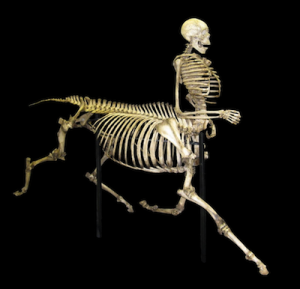 There’s something fascinating about our chromosomes. We have 23 pairs. Chimpanzees and gorillas, our closest living relatives, have 24. If you come to these facts cold, you might think this represented an existential crisis for evolutionary biologists. If we do indeed descend from a common ancestor with great apes, then our ancestors must have lost a pair after our lineage branched off, some six million years ago. How on Earth could we just give up an entire chromosome.
There’s something fascinating about our chromosomes. We have 23 pairs. Chimpanzees and gorillas, our closest living relatives, have 24. If you come to these facts cold, you might think this represented an existential crisis for evolutionary biologists. If we do indeed descend from a common ancestor with great apes, then our ancestors must have lost a pair after our lineage branched off, some six million years ago. How on Earth could we just give up an entire chromosome.
A close look at our genome and the genome of our close relatives reveals that we didn’t. We just combined a couple of them. Every now and then, chromosomes fuse. This fusion occurs as sperm and eggs develop, as pairs of chromosomes fold over each other and swap chunks of DNA. Sometimes two different chromosomes grab onto each other and then fail to separate.
Scientists have observed both humans and mammals with fused chromosomes. Chromosomes typically have distinctive stretches of DNA in their center and at their ends. From time to time, scientists will find an individual that’s short a chromosome, but one of the chromosomes it retains now has an odd structure, with ...
Published on July 19, 2012 09:13
